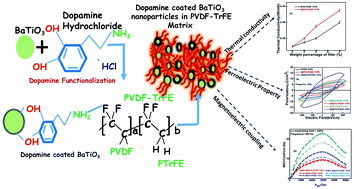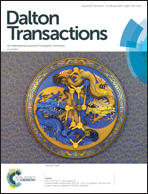Dopamine functionalization of BaTiO3: an effective strategy for the enhancement of electrical, magnetoelectric and thermal properties of BaTiO3-PVDF-TrFE nanocomposites
Abstract
Electro-active polymer–ceramic composite systems are emerging materials in the fields of nanoelectronic, microelectromechanical and macroelectronic device applications. Still more precise and concise research studies have yet to come in the areas of energy storage, harvesting, energy conversion, etc. In line with this, we have synthesized and analyzed PVDF-TrFE based nanocomposites of both functionalized and non-functionalized BaTiO3 (BTO). All the samples were prepared as free standing films by employing a solvent cast method. A systematic study of structural, morphological, thermal, dielectric, ferroelectric, piezoelectric and magnetoelectric (ME) properties has been carried out. It has been reported that the addition of BTO nanoparticles (with and without functionalization) into a polymer matrix substantially improved the properties of the nanocomposite. By performing the above mentioned characterization, it could be proved that dopamine functionalized BTO (DBTO) samples are better choices for the above mentioned applications including magnetoelectric applications, than the non-functionalized ones.



 Please wait while we load your content...
Please wait while we load your content...